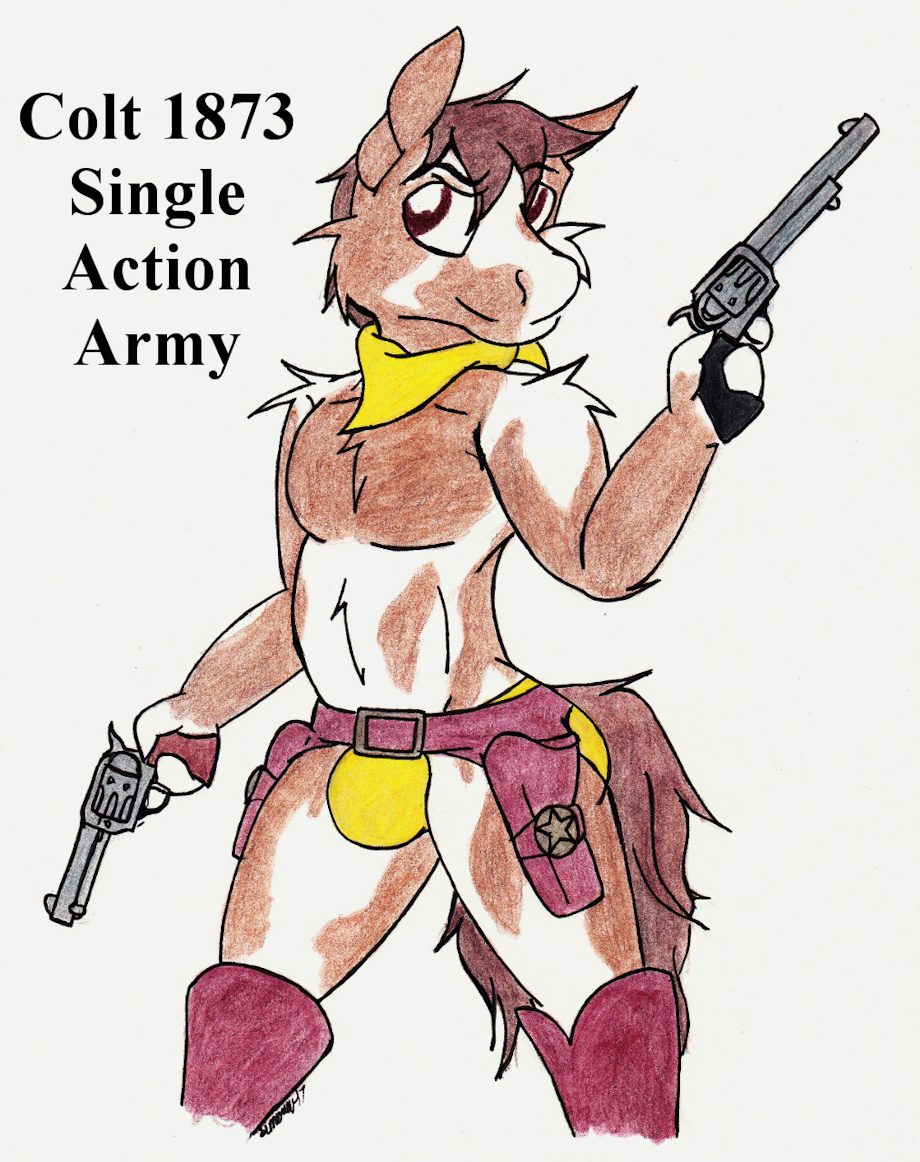Origin: United States
Year: 1873
Type: Single action revolver
Caliber: .45 Colt (numerous other calibers available including including .44-40, .38 Colt, .38 Special, .357 Magnum, and .32-20)
Weight: ~1,048 g (~37 oz)
Length: 12.5 in (318 mm) with 7.5 in barrel
Barrel length: 7.5 in (191 mm) (other barrel lengths available)
Capacity: 6 rds (5 rds safely in load one, skip one, load four pattern)
Few firearms are as iconic of not only a historical era but also of an entire genre of fiction as the Colt 1873 Single Action Army (SAA, Peacemaker) is with the American West and the western. Developed to replace Colt's line of percussion and cartridge-conversion revolvers while also avoiding paying royalties to Smith & Wesson for their patent on the bored-through revolver cylinder for cartridge use, the SAA would be adopted by the US military alongside it's Smith & Wesson competitor. The Colt design proved to be more popular with the American military and the S&W revolvers were eventually withdrawn from service. Though the double action Colt 1892 had been intended to replace the old Peacemaker around the turn of the century, the 1873 was generally preferred by soldiers deployed into combat due to its more potent .45 Colt cartridge when compared to the anemic .38 Colt of the 1892. Eventually the Single Action Army was replaced with another iconic .45 caliber Colt, the semi-automatic Colt M1911. However, it did see action well into World War II thanks to the iconic ivory-handled Peacemaker carried by General George S. Patton.
The Single Action Army was a favorite of both soldiers and civilians alike. It has become an iconic piece of Americana through its historical and, thanks to its close association with the Western genre, fictional use. The Colt "Peacemaker" remains a popular handgun to this day, particularly in the United States. The 1873 is still currently in production with Colt and multiple companies, such as Uberti, manufacture clones of the weapon.
(Due to its design, there is nothing separating the firing pin from the chamber when the hammer is down in the uncocked position. This means that if the hammer is resting on a loaded chamber, a sturdy bump on the hammer can result in the weapon firing. Consequently, a practice of load one, skip one, load four was adopted. This means that when loading a SAA one should load the one chamber, skip the next, and the load the remaining four. This will result in the hammer resting on an empty chamber and rendering the weapon safer to carry.)
Keywords
male
1,190,821,
horse
59,212,
equine
36,154,
pinup
30,857,
gun
7,719,
weapon
5,461,
colt
2,470,
firearm
794,
revolver
465,
handgun
345,
painted horse
35,
martial pinups
24,
peacemaker
7,
single action army
3,
colt 1873
1
Details
Published:
8 years ago
10 Feb 2017 00:02 CET
Initial: c866487c1e47a8e94c2102a14c793ee6
Full Size: 22c20c28995c8b04d98bcb020a5897c9
Large: c6f1136d367a485199460a36c75e20e6
Small: b5dc91956cedaa9bbc006dc538521bd4
Stats
21 views
3 favorites
2 comments
